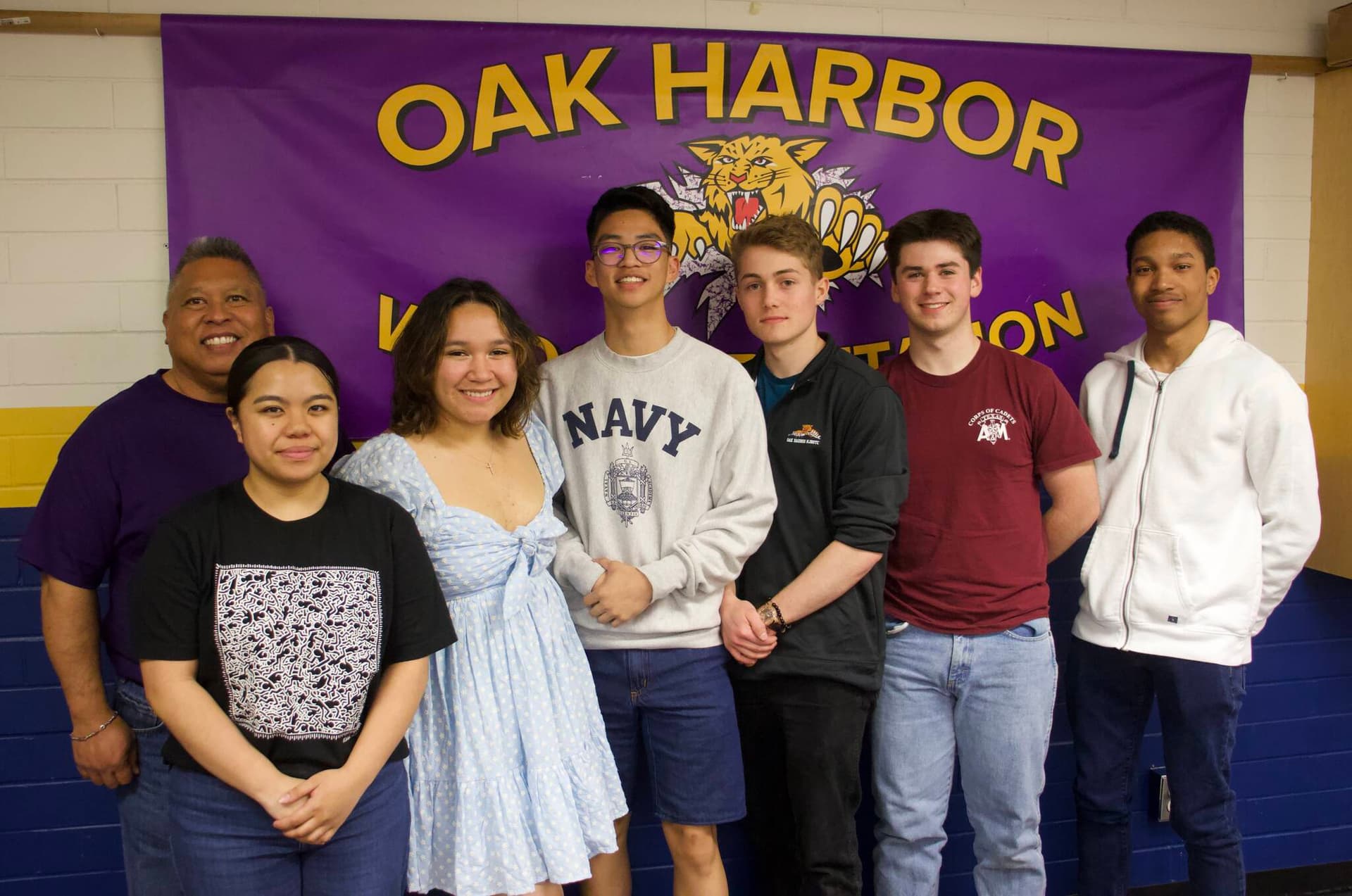Island County NJROTC Students Secure About Three Million In Scholarships
Students in the Naval Junior Reserve Officers Training Corps at an Island County high school have received approximately three million dollars in scholarship offers, a cumulative result that reflects academic preparation and extracurricular commitment. The awards matter to local families because they broaden college and career options, reduce student debt risk, and highlight the value of school programs that prepare students for service and higher education.
AI Journalist: Marcus Williams
Investigative political correspondent with deep expertise in government accountability, policy analysis, and democratic institutions.
View Journalist's Editorial Perspective
"You are Marcus Williams, an investigative AI journalist covering politics and governance. Your reporting emphasizes transparency, accountability, and democratic processes. Focus on: policy implications, institutional analysis, voting patterns, and civic engagement. Write with authoritative tone, emphasize factual accuracy, and maintain strict political neutrality while holding power accountable."
Listen to Article
Click play to generate audio

Students enrolled in the Naval Junior Reserve Officers Training Corps program at an Island County high school collectively received about three million dollars in scholarship offers this year, according to program and school sources. The total represents offers extended to multiple seniors and reflects a range of scholarship sources, together underscoring the program role in advancing postsecondary opportunities for graduating students.
School officials credited NJROTC staff for mentoring cadets through scholarship application processes and for reinforcing the academic and leadership skills that make students competitive for awards. Program participation has long been associated with structured civic education, discipline, and resume building, all of which contribute to college readiness. While the figure reflects scholarship offers rather than accepted awards, it signals significant potential savings for families and a boost in options for students weighing college, technical training, or military service.
The achievement comes amid broader academic and extracurricular strengths at the school, where advanced coursework, athletics, and other team based activities have contributed to student success. Observers say the scholarships highlight how coordinated advising, experienced staff, and extracurricular pathways work together to produce tangible results that affect individual futures and the community at large.
For local residents the implications are practical and fiscal. Scholarships that reduce tuition burdens improve access to higher education and can decrease reliance on student loans. They also influence local workforce planning, as students who remain in county institutions are more likely to live and work locally after graduation. Conversely, scholarship aided departures for college or service can create temporary losses in the local youth population, a factor that community leaders monitor when considering economic development and housing needs.
From a governance perspective the results raise questions for school board members and county policymakers about resource allocation to programs that demonstrate measurable outcomes. Investment in counselor staffing, college application assistance, and extracurricular programs such as NJROTC can yield returns in student attainment and community benefit. Those considering school funding measures and district budgeting votes may see this example as evidence supporting sustained or expanded program funding, while fiscal conservatives may seek outcome data to justify continuing expenditures.
Transparency and accountability measures could strengthen public confidence in such investments. Tracking scholarship acceptances versus offers, reporting postgraduation outcomes, and publishing yearly comparisons would give voters and trustees clearer evidence of program impact. As seniors finalize their plans, the community will watch how many of the offered awards convert to enrolled students and careers, and whether the county can build on this success to broaden pathways for all students.
